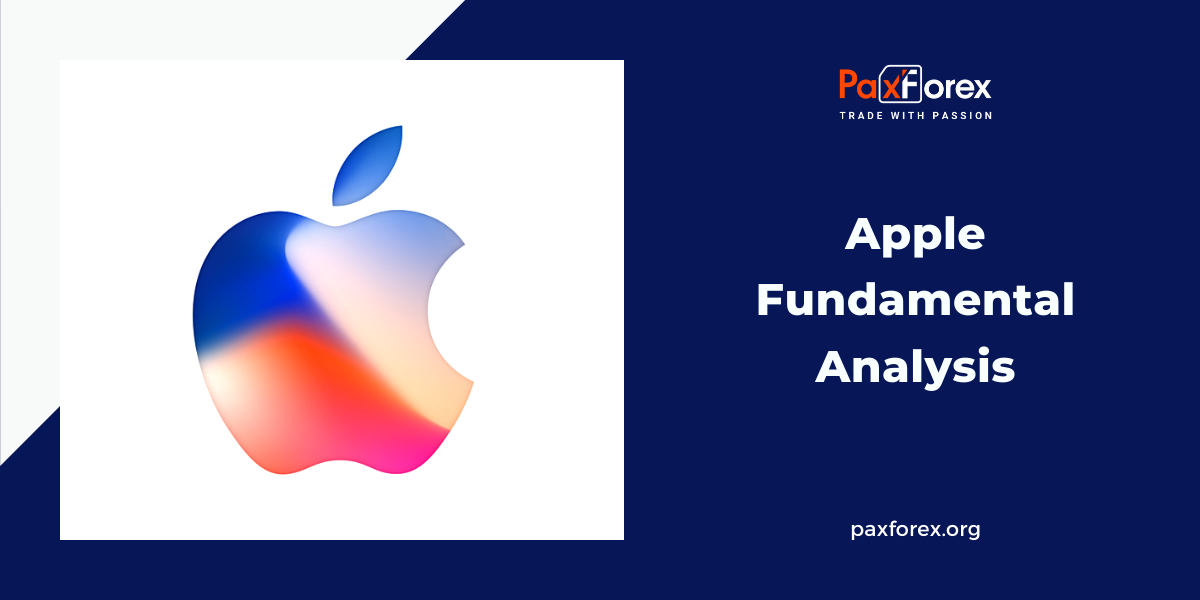
Source: PaxForex Premium Analytics Portal, Fundamental Insight
Investors who prefer technology and growth stocks are probably aware of the sell-off that has affected small and mid-sized stocks in the face of inflation. Numerous NASDAQ stocks are down 30%, 50%, 75% from their highs.
At the same time, tech giant Apple is near 52-week highs and up 40% in the last twelve months, a sign that investors are selling smaller, riskier stocks and buying big, well-positioned stocks like Apple. Beware: herd mentality can be dangerous to your portfolio. That's why Apple could be the biggest disappointment of 2022.
Of course, calling Apple a bubble stock is not quite right. After all, the company has a market value of nearly $3 trillion, its products are cherished by virtually everyone, and its business brings hundreds of billions of dollars in revenue. But bubbles don't always arise from bad stocks or companies; they arise from consensus. When everyone around you agrees, you should be most cautious.
How is the stock market feeling right now? Let's explore this question a bit. Right now, the market looks very divided. If you look at the broad indices, things are looking good. The NASDAQ is at 15,100, not that far from its all-time high, and has risen considerably over the last year.
However, only 26% of NASDAQ stocks are currently above their 200-day moving average, which is the average closing price of a stock over the last 200 trading sessions. About 75% of stocks are below that threshold, which means unhealthy price action for most NASDAQ stocks.
If so many stocks are struggling, why is the index performing so well? Investors have largely sold off most stocks listed on the NASDAQ and rushed to a select handful of large-cap stocks, which are what drove the index higher because they have more weight in the index.
Apple is the largest stock in the NASDAQ. From the chart below, we can see that the price movements on NASDAQ and Apple have been similar:
The huge size and continued rise in Apple's stock price may help clarify why the NASDAQ is holding up so well while many of its constituents are struggling.
Apple continues to grow, and in the past twelve months, its stock price has risen 40 percent. But as investors continue to buy up the stock, the stock price is outpacing the business, and Apple's valuation has risen sharply over the past couple of years.
The stock price to earnings ratio (P/E) has risen to 31, about double its historical average of 15.
Investors should look for reasons why the stock earns a new valuation whenever there is a substantial break from the historical average. In other words, we should be able to explain why Apple should double its valuation. Apart from that, it becomes problematic to hold on to that higher price over the long term; it may eventually return to its historical "norm."
Two main factors work against Apple. First, it is harder for a company to grow as it gets bigger. It is often easier to go from 0 to 10 than from 100 to 1,000. Apple's market value is approaching $3 trillion, which is about one-eighth of the entire United States economy. In 2021, the company is expected to generate nearly $400 billion in revenue. Apple is just a huge company, so it is very difficult for it to continue to grow at a rapid pace.
Second, this reality is starting to show in analysts' expectations. Analysts believe that Apple's earnings per share (EPS) growth over the next three to five years will average 12% per year; a slowdown from Apple's average EPS growth of 19% per year over the past ten years. So, if growth is slowing and valuations are double the historical average, how can investors justify such a high price in the long run?
Inflation has risen sharply this year, driving up the cost of goods and services across the U.S. Raising the federal funds rate is one of the Federal Reserve's main tools for "cooling down" the economy and slowing inflation.
Currently, the Federal Reserve uses a target rate of 0% to 0.25%, implying that borrowing money is very cheap. It is a tool to stimulate economic growth, which often raises stock market valuations.
If the Fed raises its rate in 2022, it would likely have the opposite effect: borrowing money would become more expensive, the economy would cool, and stock valuations would fall. In Apple's case, the company's stock is currently a deviation from its historical norms, making it vulnerable to a correction in a market with higher rates.
As long as the price is above the level of 163.20, follow the recommendations below:
- Time frame: D1
- Recommendation: long position
- Entry point: 170.50
- Take Profit 1: 183.50
- Take Profit 2: 188.60
Alternative scenario:
If the level of 163.20 is broken-down, follow the recommendations below:
- Time frame: D1
- Recommendation: short position
- Entry point: 163.20
- Take Profit 1: 154.90
- Take Profit 2: 150.00













